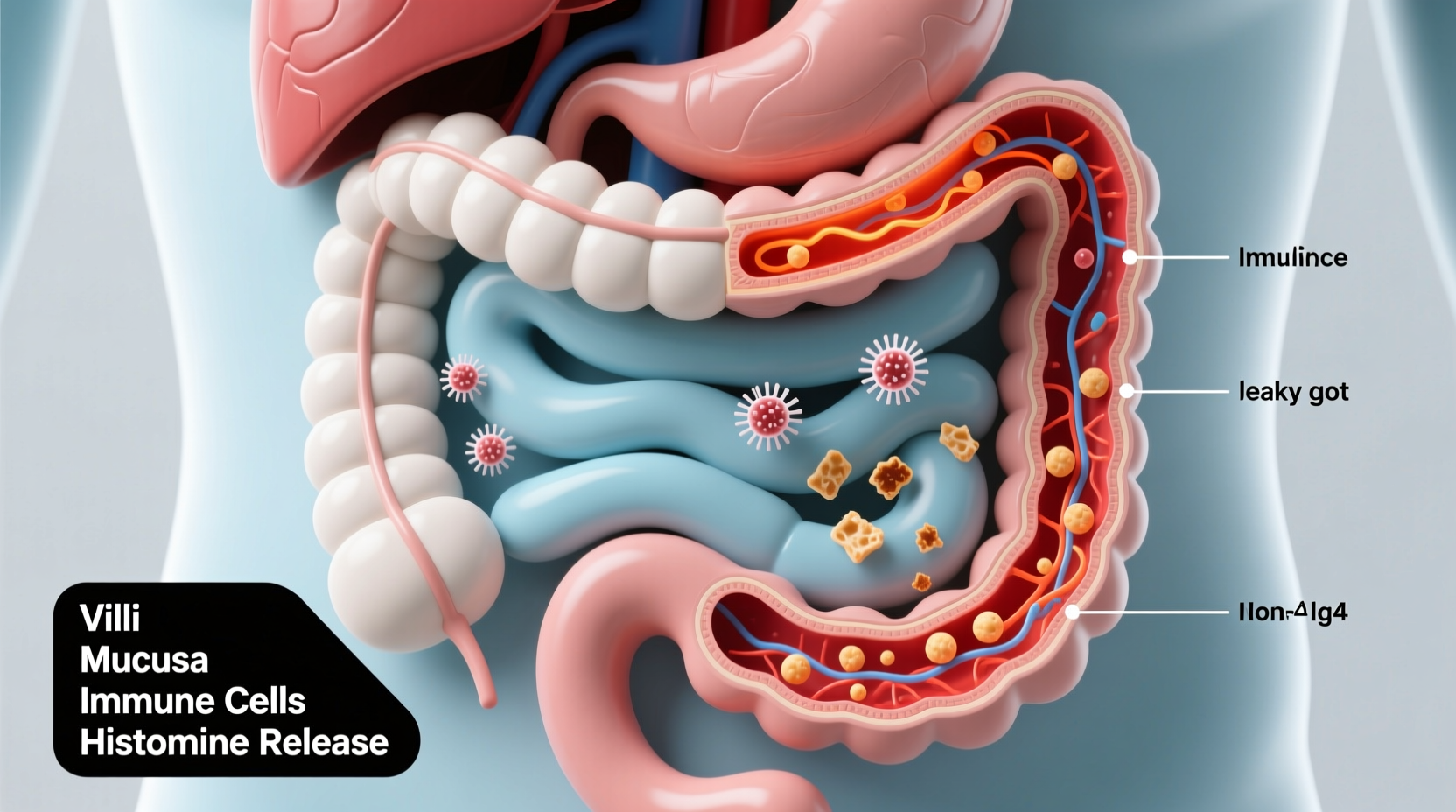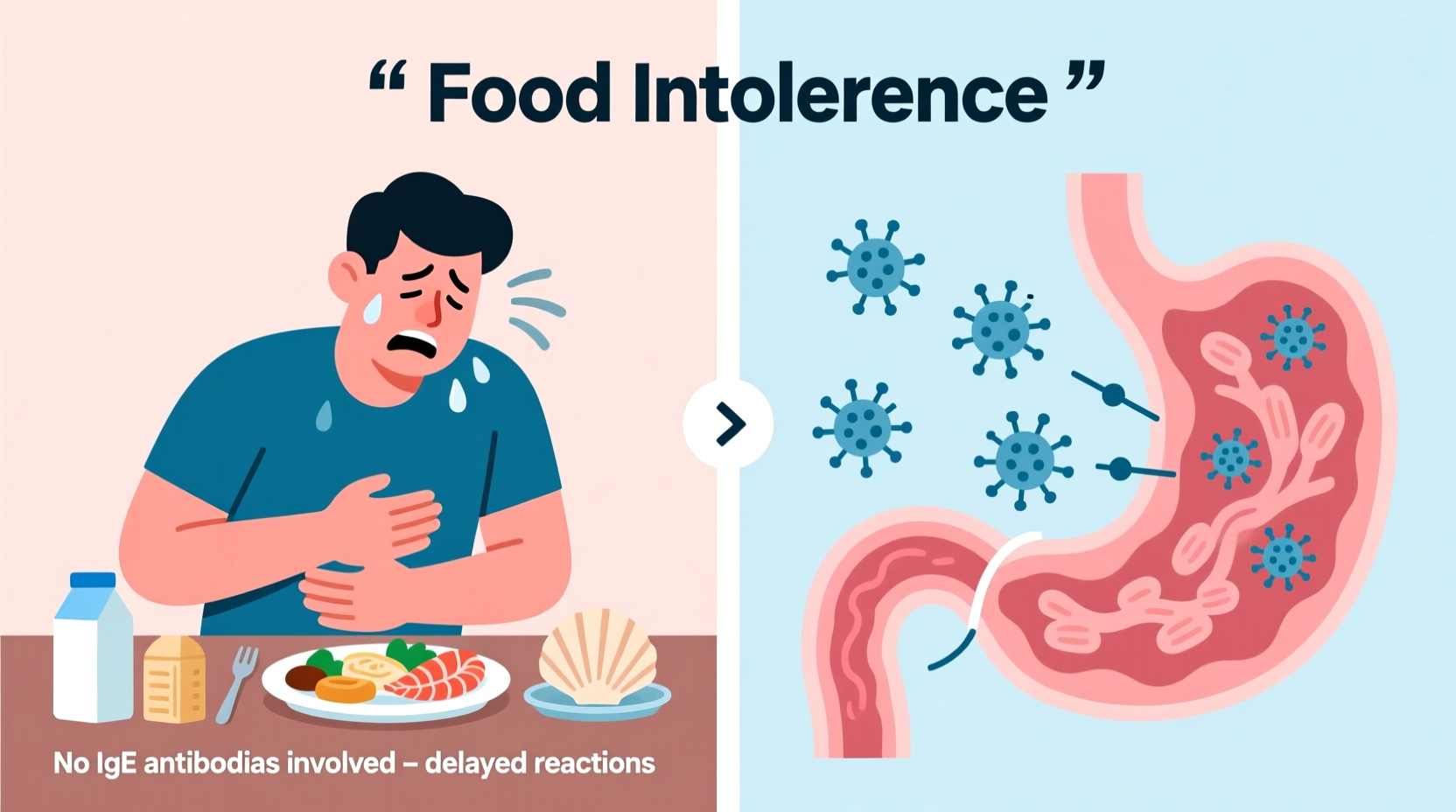Have you ever experienced uncomfortable digestive symptoms after eating certain foods, but weren't sure why? You're not alone. Millions of people struggle with food intolerances without understanding what's happening in their bodies. This comprehensive guide will help you distinguish between normal digestion issues and true food intolerance, recognize your specific triggers, and implement practical management strategies that actually work.
Understanding Your Body's Response to Problem Foods
When you have a food intolerance, your digestive system struggles to process specific components in certain foods. This differs fundamentally from food allergies, which trigger an immune system response. Food intolerances typically develop because your body lacks sufficient enzymes to break down particular food components, or has difficulty absorbing certain compounds.
For example, lactose intolerance occurs when your small intestine doesn't produce enough lactase enzyme to digest lactose (milk sugar). Without adequate lactase, undigested lactose passes into your colon where bacteria ferment it, causing gas, bloating, and diarrhea. Similarly, people with non-celiac gluten sensitivity lack the ability to properly process gluten proteins found in wheat, barley, and rye.
| Characteristic | Food Intolerance | Food Allergy |
|---|---|---|
| Body System Involved | Digestive system | Immune system |
| Onset of Symptoms | Hours to days after consumption | Minutes to hours after consumption |
| Common Symptoms | Bloating, gas, diarrhea, stomach pain | Hives, swelling, breathing difficulties, anaphylaxis |
| Quantity Threshold | Often dose-dependent (small amounts may be tolerated) | Even trace amounts can trigger reaction |
| Medical Testing | Elimination diets, hydrogen breath tests | Skin prick tests, blood tests (IgE) |
This critical distinction explains why many people mistakenly believe they have food allergies when they're actually experiencing food intolerances. According to research published in the Journal of Allergy and Clinical Immunology, up to 20% of people who believe they have food allergies actually have food intolerances instead.
Common Types of Food Intolerances and Their Triggers
While virtually any food can potentially cause intolerance, certain types are far more prevalent. Understanding these common intolerances helps identify potential triggers in your own diet:
Lactose Intolerance
Affecting approximately 68% of the world's population according to NIH data, lactose intolerance stems from insufficient lactase enzyme production. Symptoms typically appear 30 minutes to 2 hours after consuming dairy products. Prevalence varies significantly by ethnicity, with higher rates among Asian, African, and Native American populations.
Non-Celiac Gluten Sensitivity
Distinct from celiac disease (an autoimmune disorder), non-celiac gluten sensitivity affects an estimated 0.5-13% of the population. People experience similar digestive symptoms to celiac disease but without the intestinal damage or specific antibodies. Research from the University of Rome suggests this condition may involve multiple mechanisms beyond gluten itself.
FODMAP Intolerance
Many people with irritable bowel syndrome (IBS) actually have difficulty digesting FODMAPs (fermentable oligosaccharides, disaccharides, monosaccharides, and polyols)—short-chain carbohydrates found in various foods. The Monash University Low FODMAP Diet, developed through extensive clinical research, has proven effective for 70-75% of IBS patients.
Other Common Intolerances
Additional frequent triggers include:
- Histamine intolerance: Caused by impaired histamine breakdown, leading to symptoms like headaches, flushing, and digestive issues
- Sulfite sensitivity: Common in wines and processed foods, causing asthma-like symptoms in susceptible individuals
- Fructose malabsorption: Difficulty absorbing fruit sugars, resulting in bloating and diarrhea

Recognizing Your Personal Symptoms Pattern
Food intolerance symptoms often develop gradually and can be easily mistaken for other digestive issues. Common manifestations include:
- Abdominal pain and cramping
- Bloating and excessive gas
- Diarrhea or constipation
- Nausea
- Headaches
- Skin issues like eczema
- Brain fog and fatigue
Unlike food allergies, these symptoms typically appear 30 minutes to 48 hours after consuming the problematic food, making identification challenging. The delayed onset explains why many people struggle to connect their symptoms with specific food triggers.
Diagnosing Food Intolerance: A Step-by-Step Approach
Accurate diagnosis requires a systematic approach. Medical professionals typically follow this process:
- Medical evaluation: Ruling out other conditions like celiac disease, inflammatory bowel disease, or food allergies through blood tests, endoscopy, or allergy testing
- Symptom tracking: Maintaining a detailed food and symptom diary for 2-4 weeks to identify potential patterns
- Elimination diet: Removing suspected trigger foods for 2-6 weeks under medical supervision
- Reintroduction phase: Systematically adding back eliminated foods to confirm reactions
The American College of Gastroenterology emphasizes that self-diagnosis can lead to unnecessary dietary restrictions and potential nutrient deficiencies. Their clinical guidelines recommend working with a registered dietitian when implementing elimination diets to ensure nutritional adequacy.
Practical Management Strategies That Work
Once you've identified your food intolerances, effective management involves more than just elimination. Consider these evidence-based approaches:
Dietary Modification, Not Elimination
Complete elimination is rarely necessary. Many people with lactose intolerance can tolerate small amounts of dairy, especially fermented products like yogurt. The European Food Safety Authority notes that most lactose-intolerant individuals can consume 12 grams of lactose (about 1 cup of milk) in a single sitting without symptoms.
Strategic Food Pairing
Consuming problematic foods with other foods can reduce symptoms. For example, eating dairy with a full meal slows gastric emptying, allowing more time for limited lactase enzyme to work. The British Nutrition Foundation recommends this approach for managing mild lactose intolerance.
Enzyme Supplements
Digestive enzyme supplements can help break down problematic components. Lactase supplements before dairy consumption have been shown effective in multiple clinical studies. However, the American Gastroenterological Association cautions that effectiveness varies between individuals and products.
Gradual Reintroduction
Some intolerances may improve with careful, gradual reintroduction. Research from King's College London suggests that regular, small exposures to problematic foods can sometimes increase tolerance over time, particularly with FODMAP sensitivities.
When to Seek Professional Guidance
While mild food intolerances can often be managed independently, consult a healthcare provider if you experience:
- Symptoms that significantly impact daily life
- Unintended weight loss
- Blood in stool
- Nighttime symptoms that disrupt sleep
- Symptoms that worsen over time
Registered dietitians specializing in food intolerances can provide personalized guidance. The Academy of Nutrition and Dietetics maintains a directory of specialists trained in elimination diets and food intolerance management. They can help ensure your modified diet remains nutritionally complete while addressing your specific triggers.
Living Well With Food Intolerance
Food intolerances don't have to control your life. With proper identification and management strategies, most people successfully adapt their diets while maintaining social connections and culinary enjoyment. The key is understanding your personal thresholds and developing flexible approaches that work for your lifestyle.
Remember that food intolerance management is highly individualized. What works for one person may not work for another, which is why personalized approaches based on careful observation and professional guidance yield the best results. By taking a systematic approach to identifying and managing your food intolerances, you can significantly improve your digestive health and overall quality of life.











 浙公网安备
33010002000092号
浙公网安备
33010002000092号 浙B2-20120091-4
浙B2-20120091-4